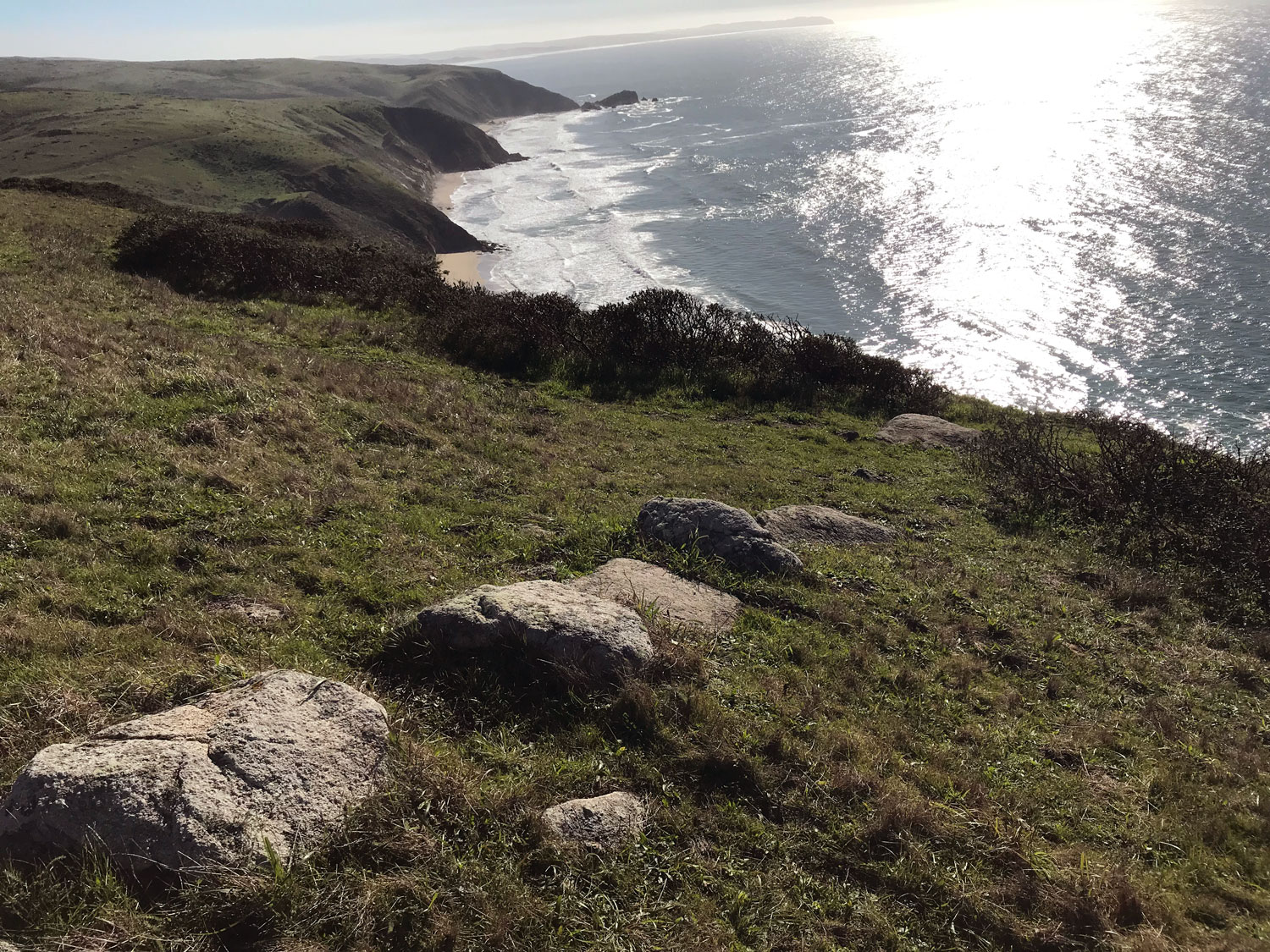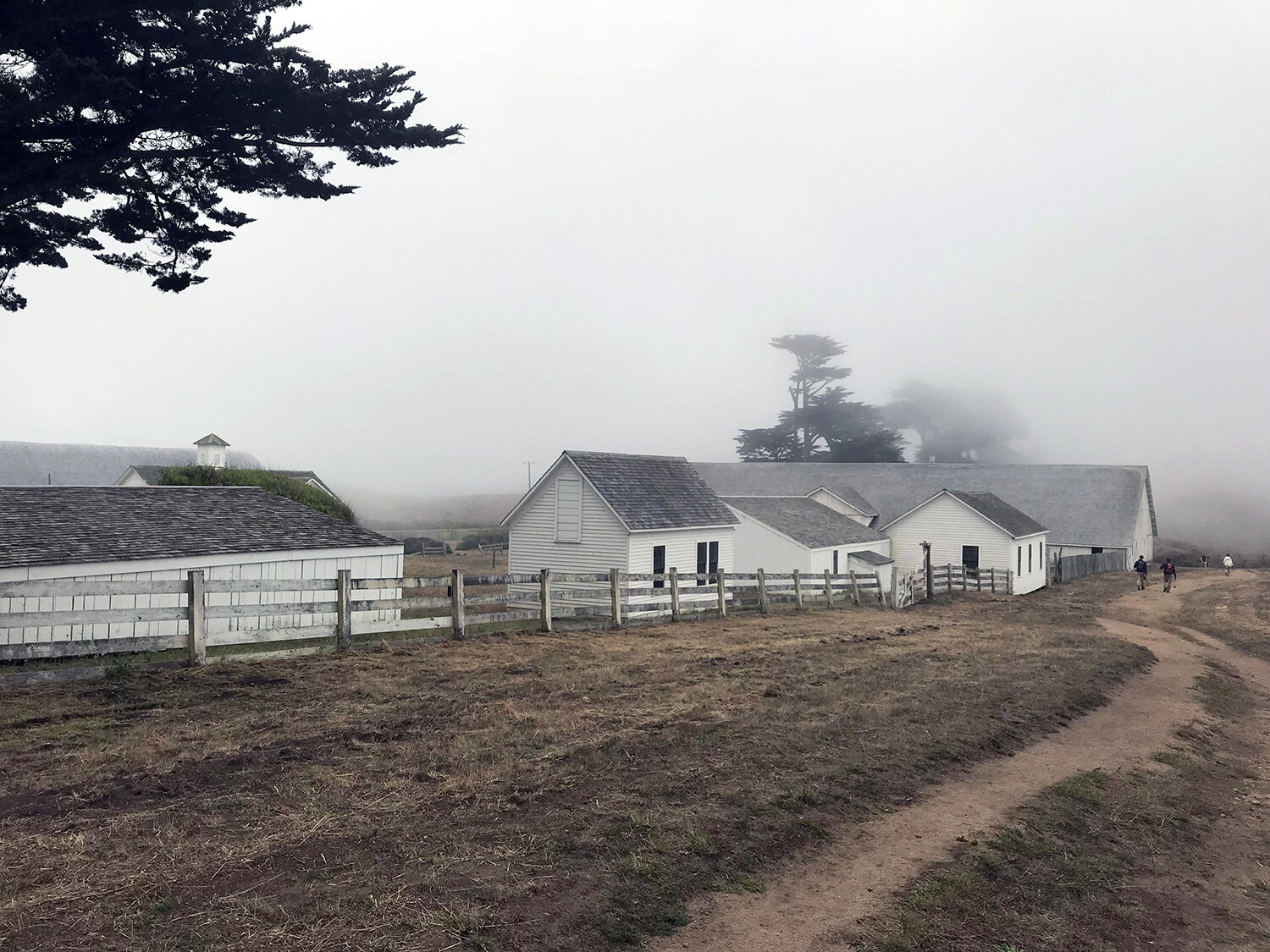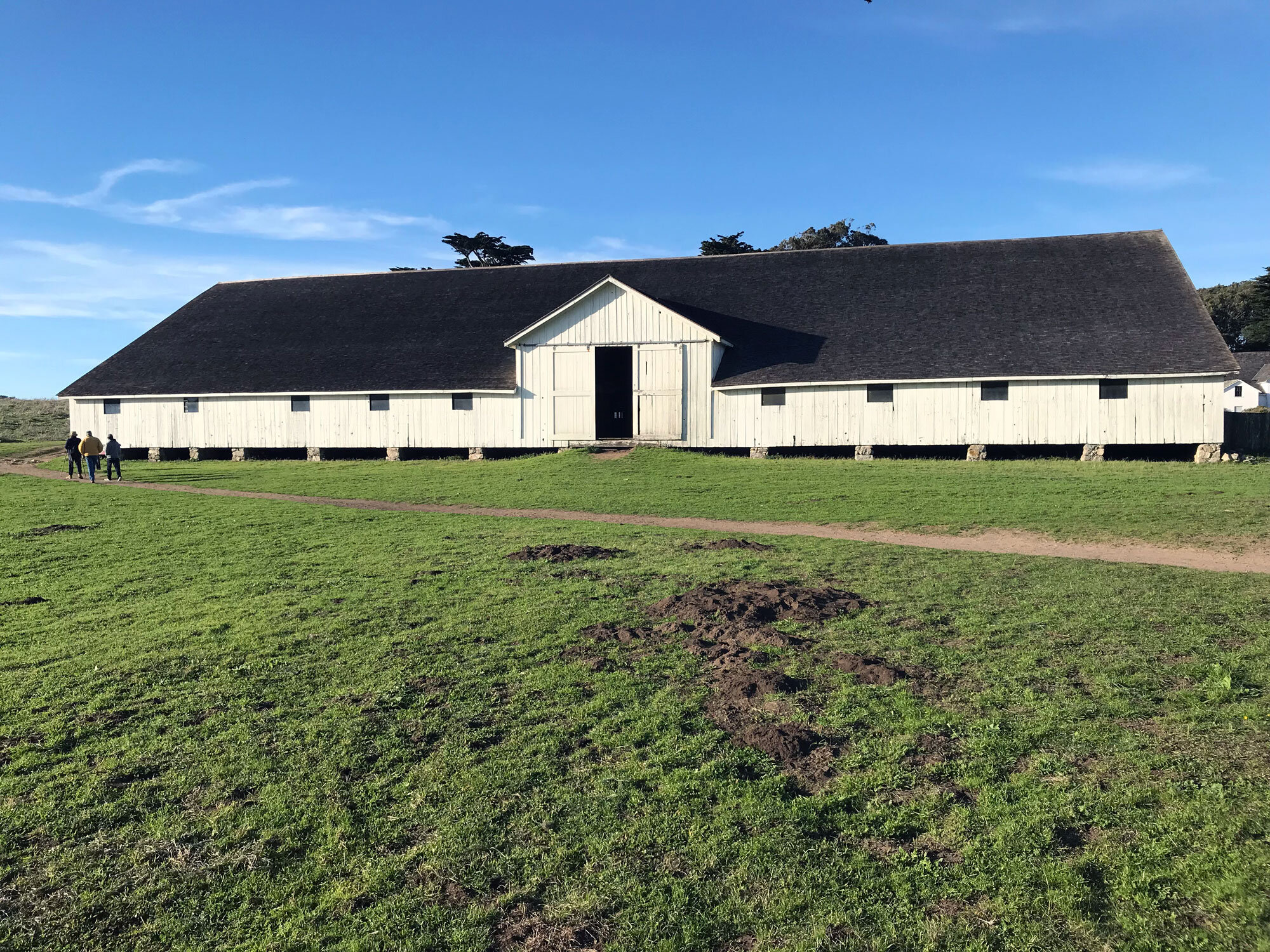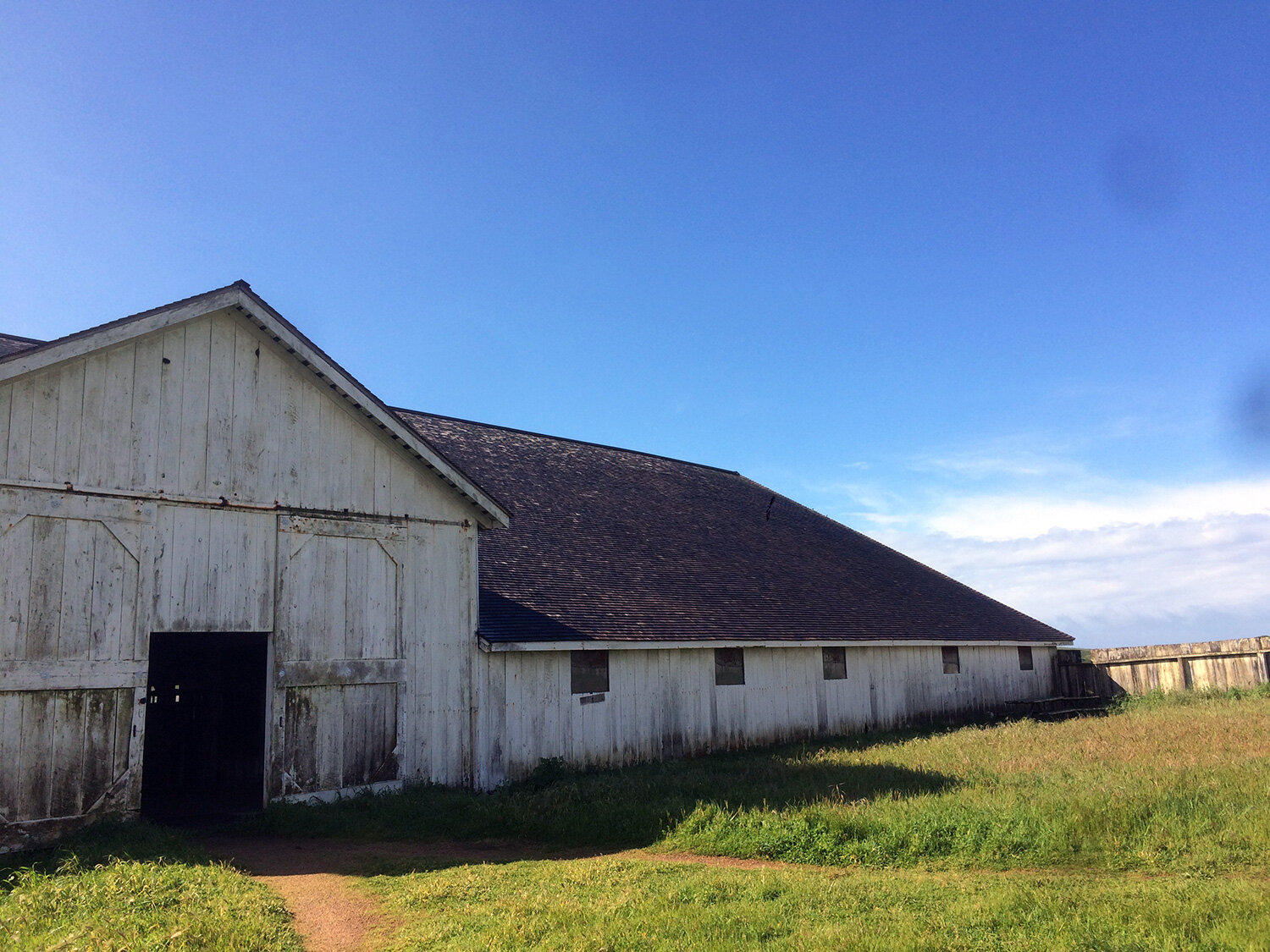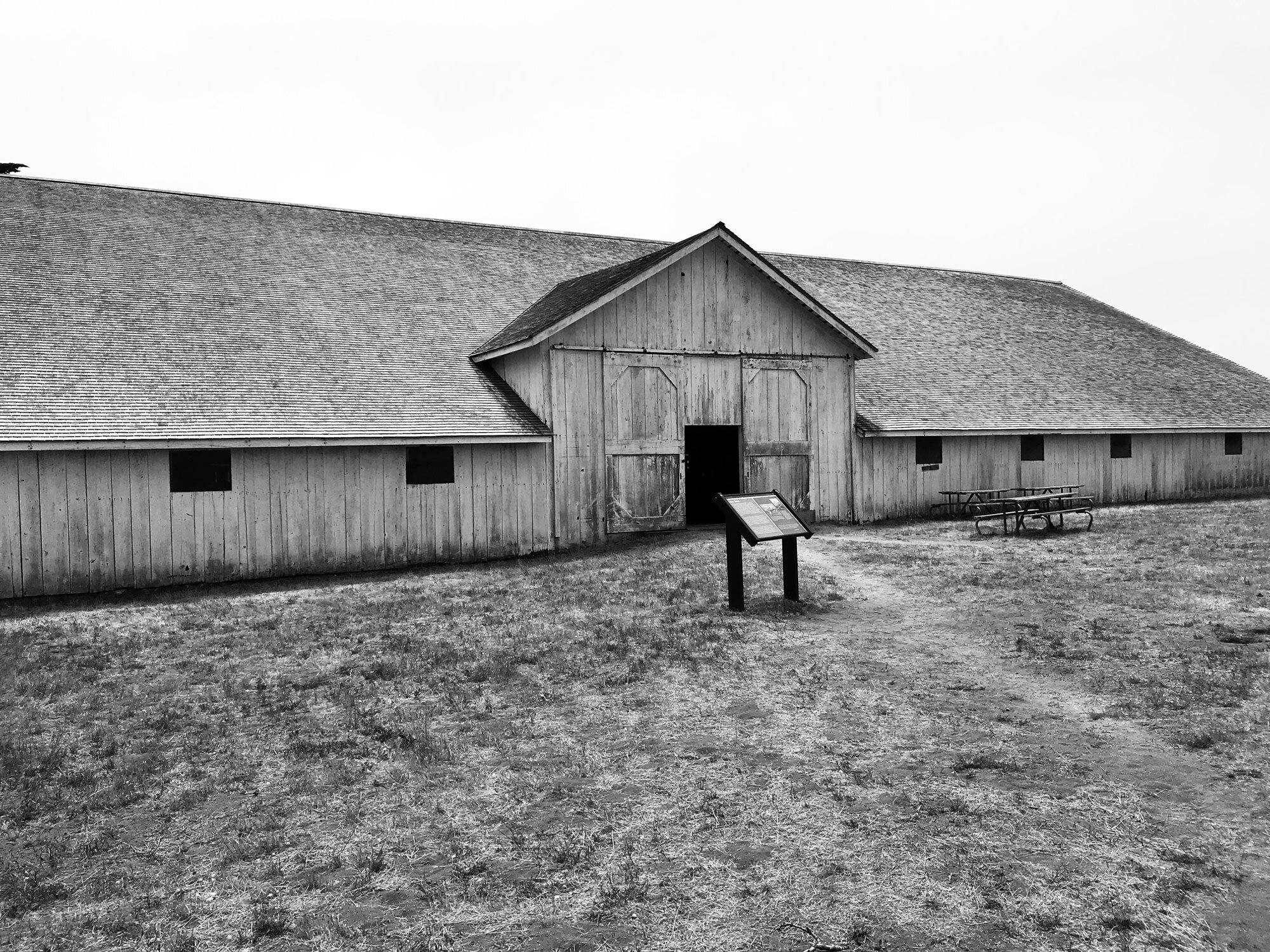Tomales Point Trail






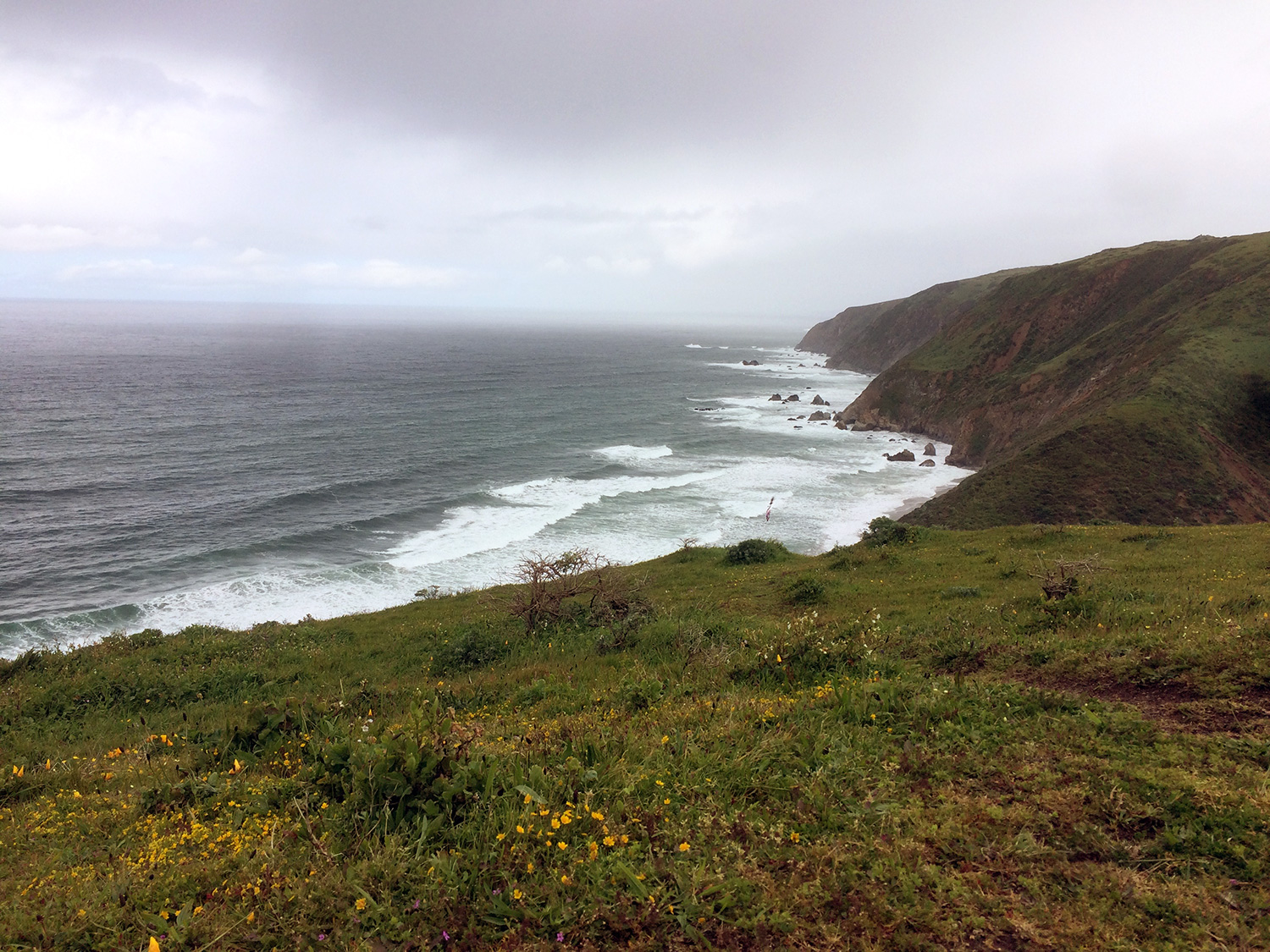

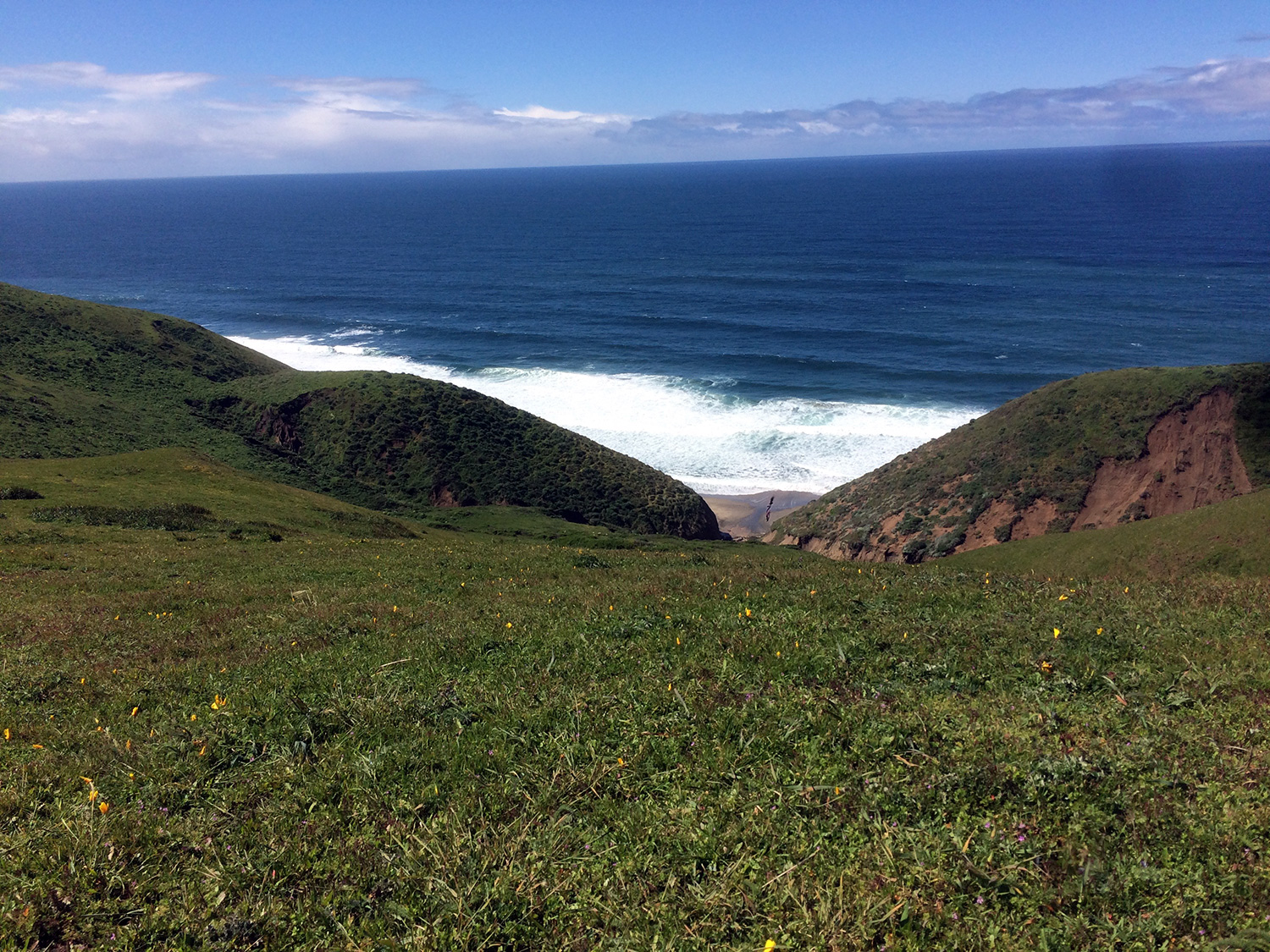
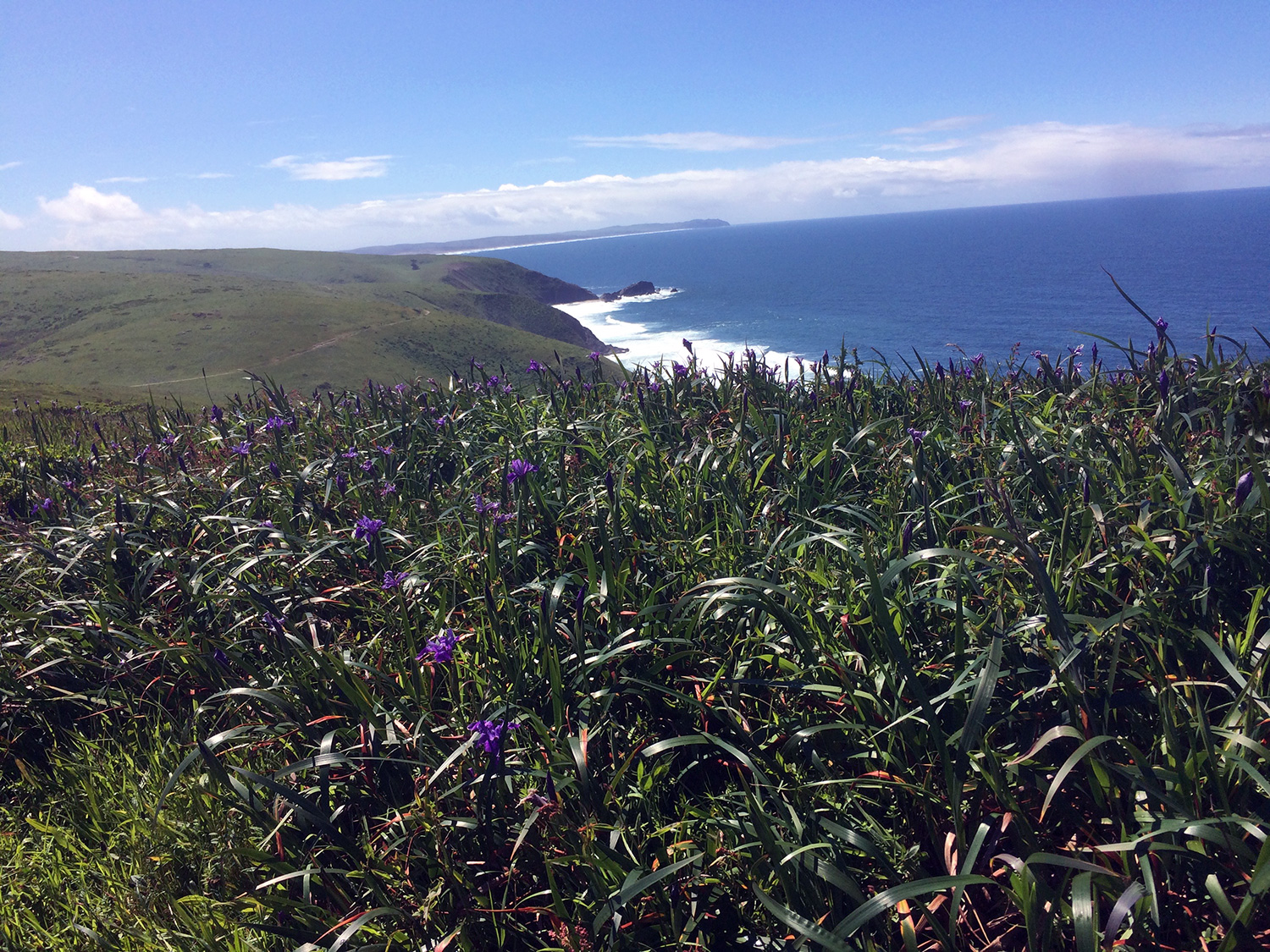















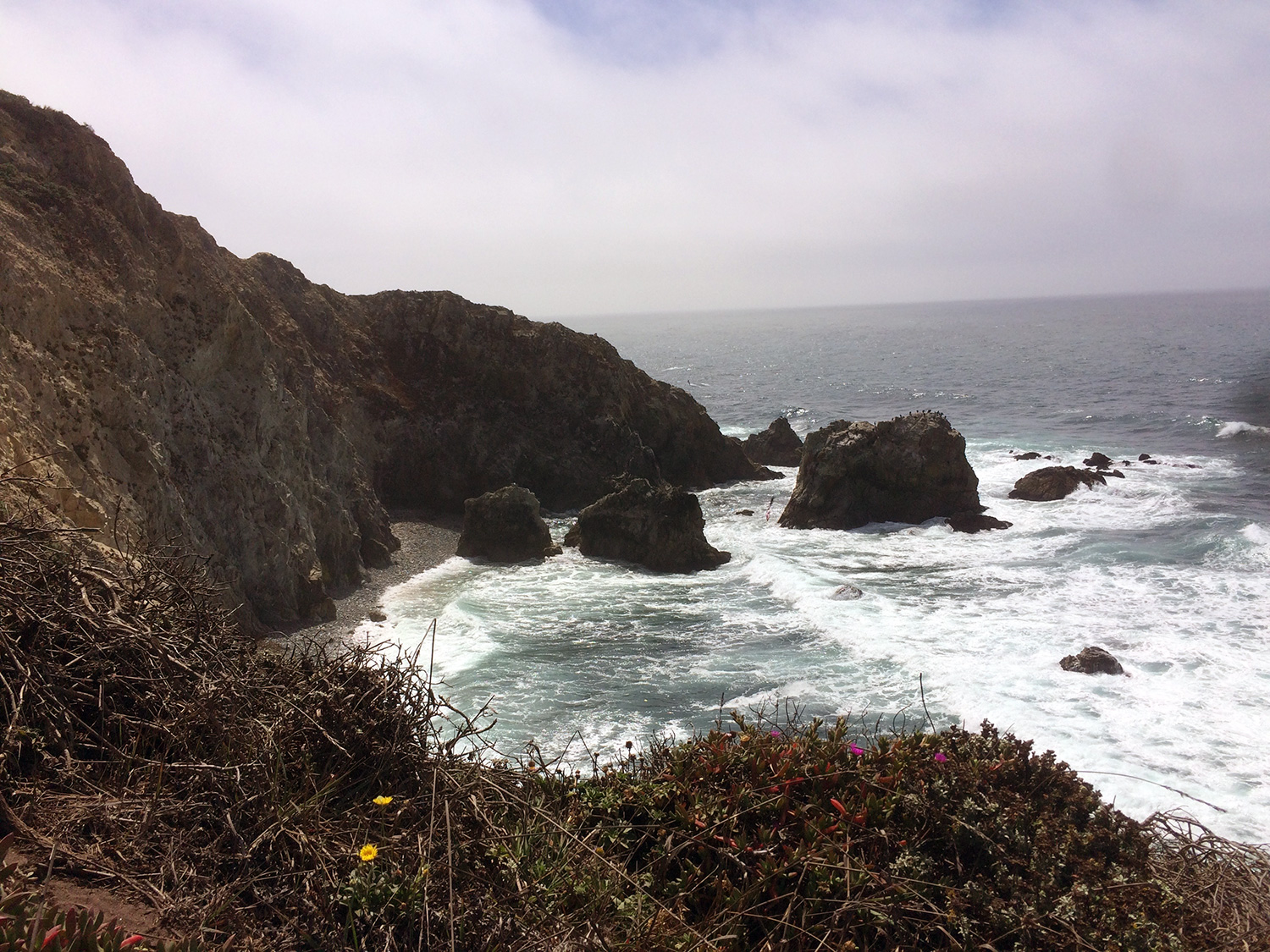






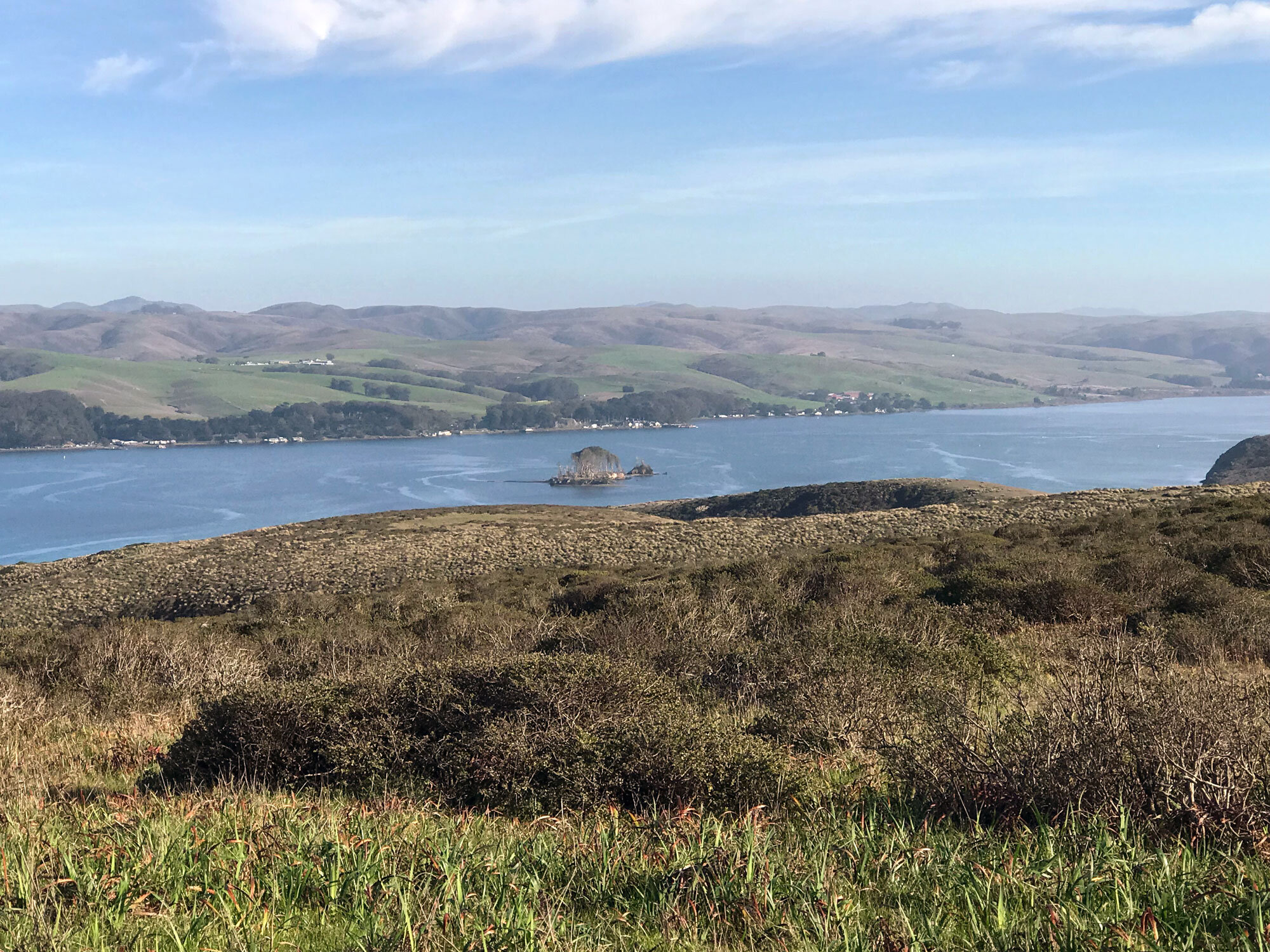










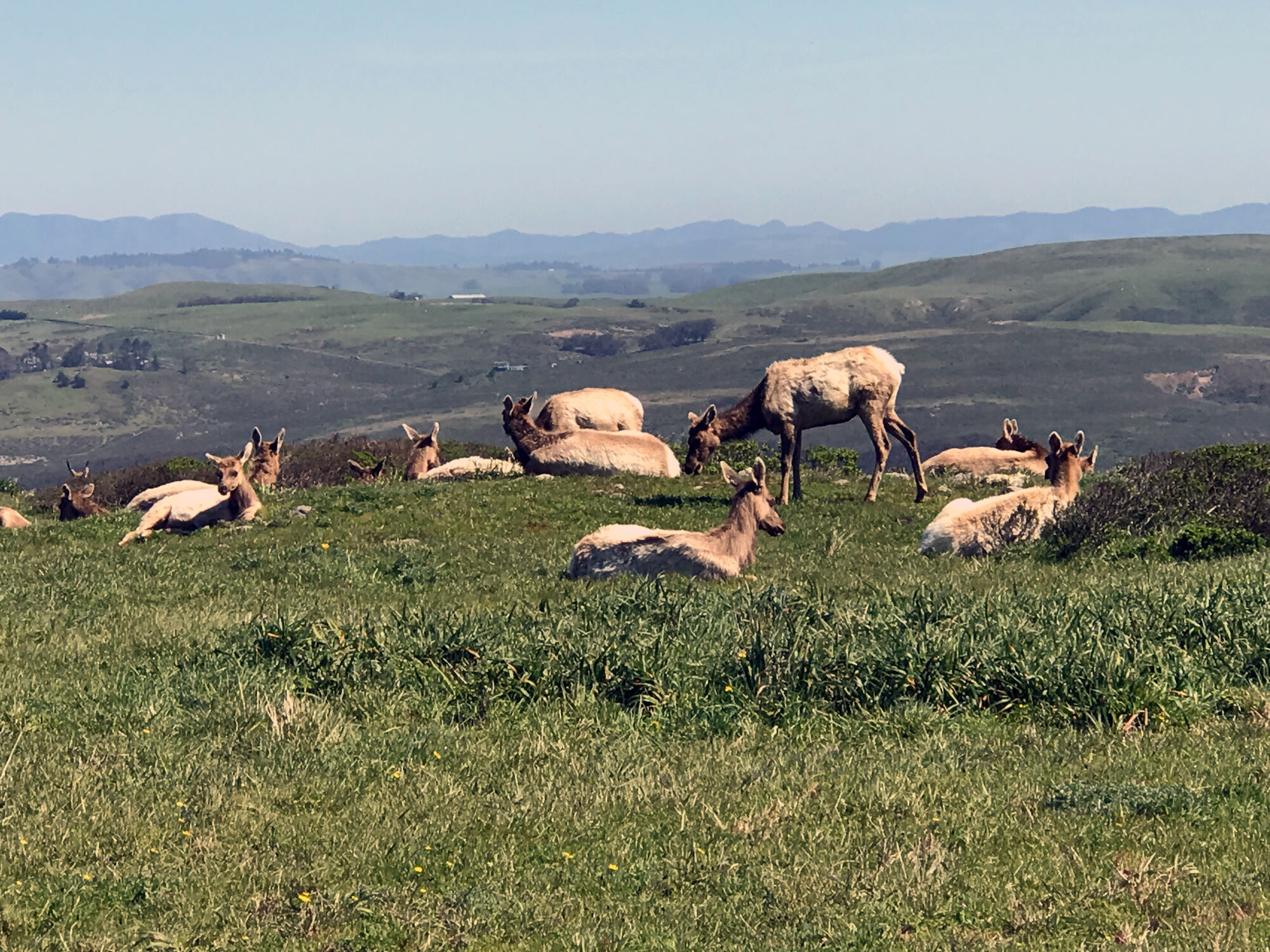









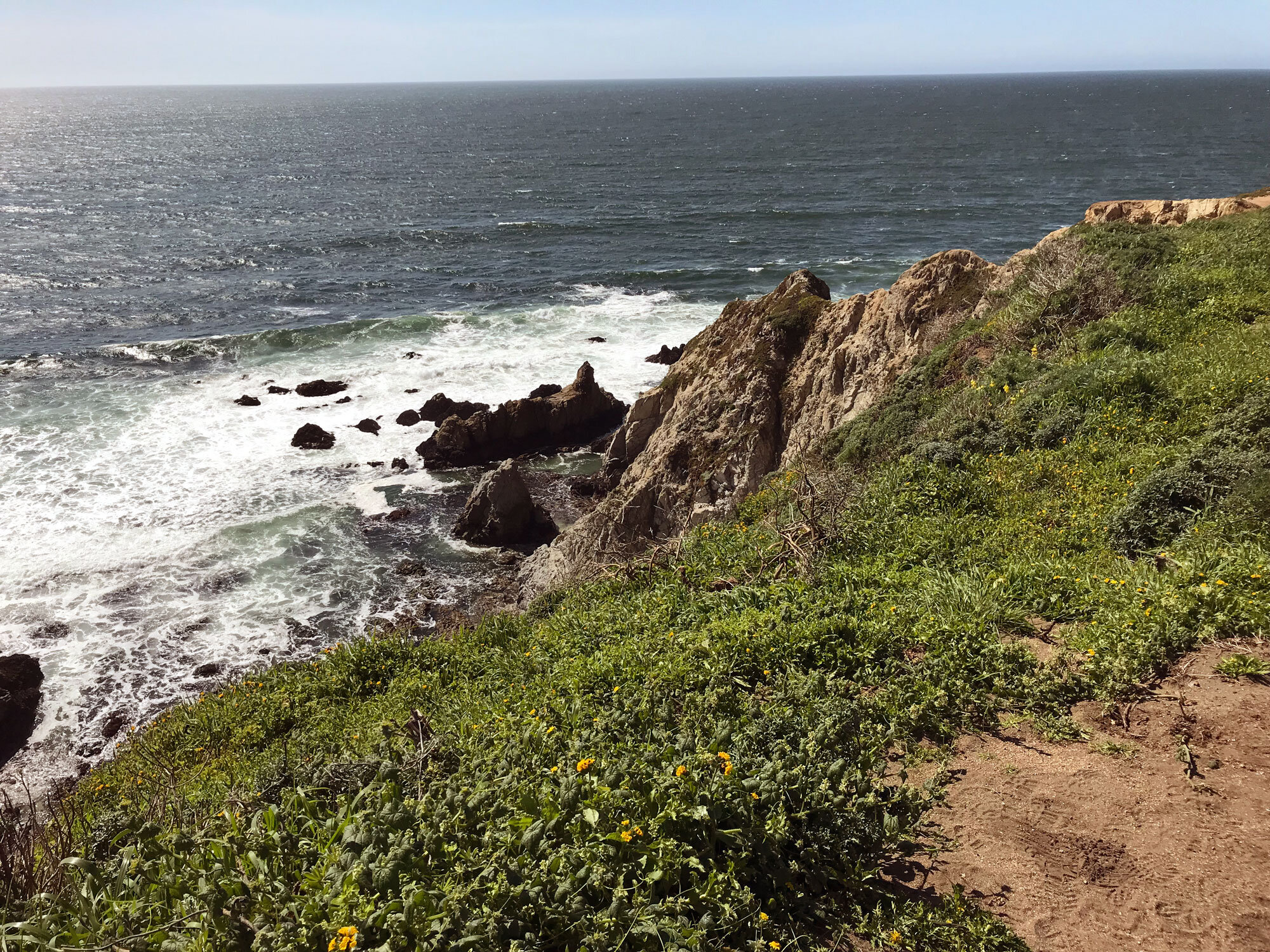





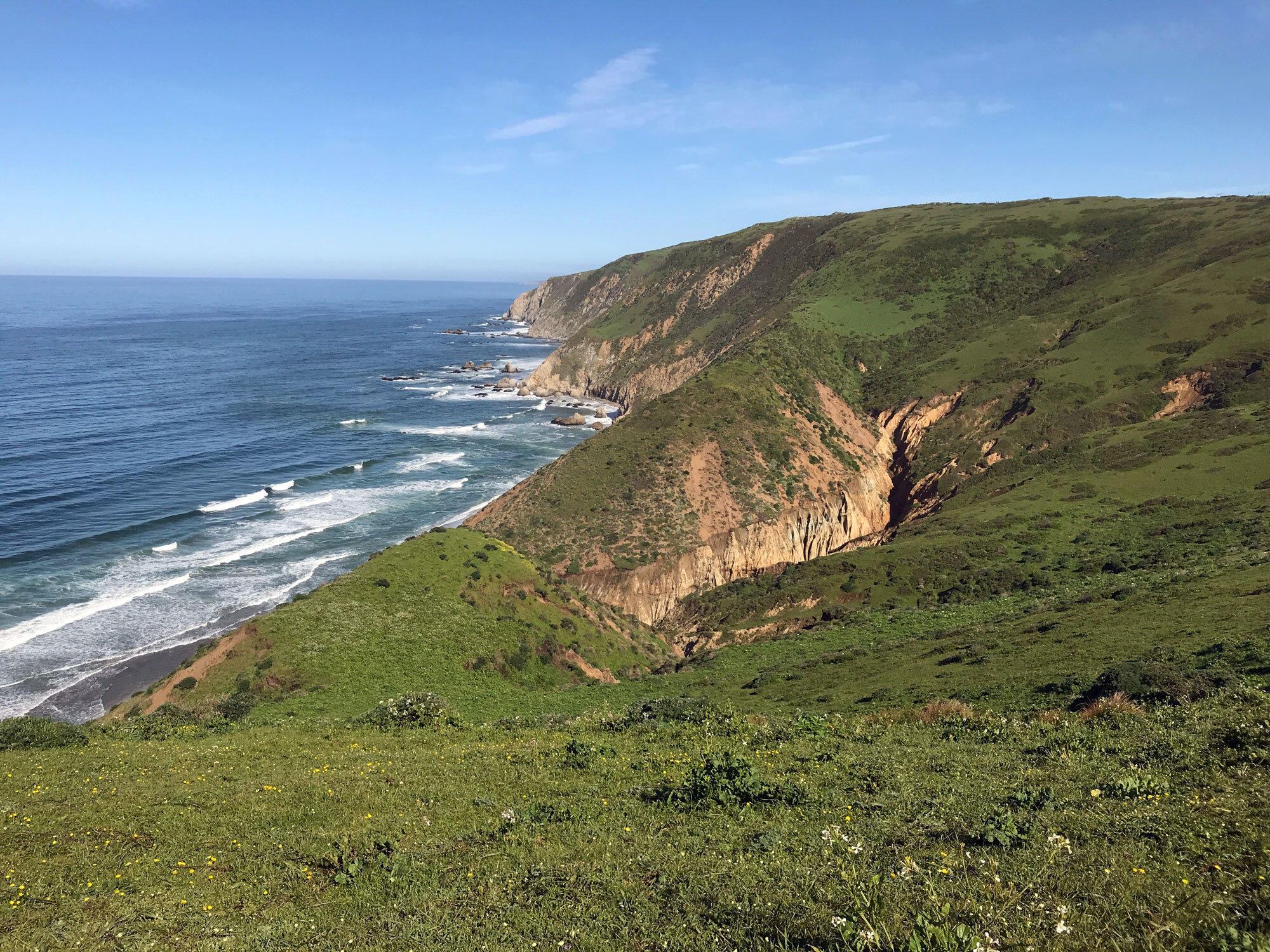




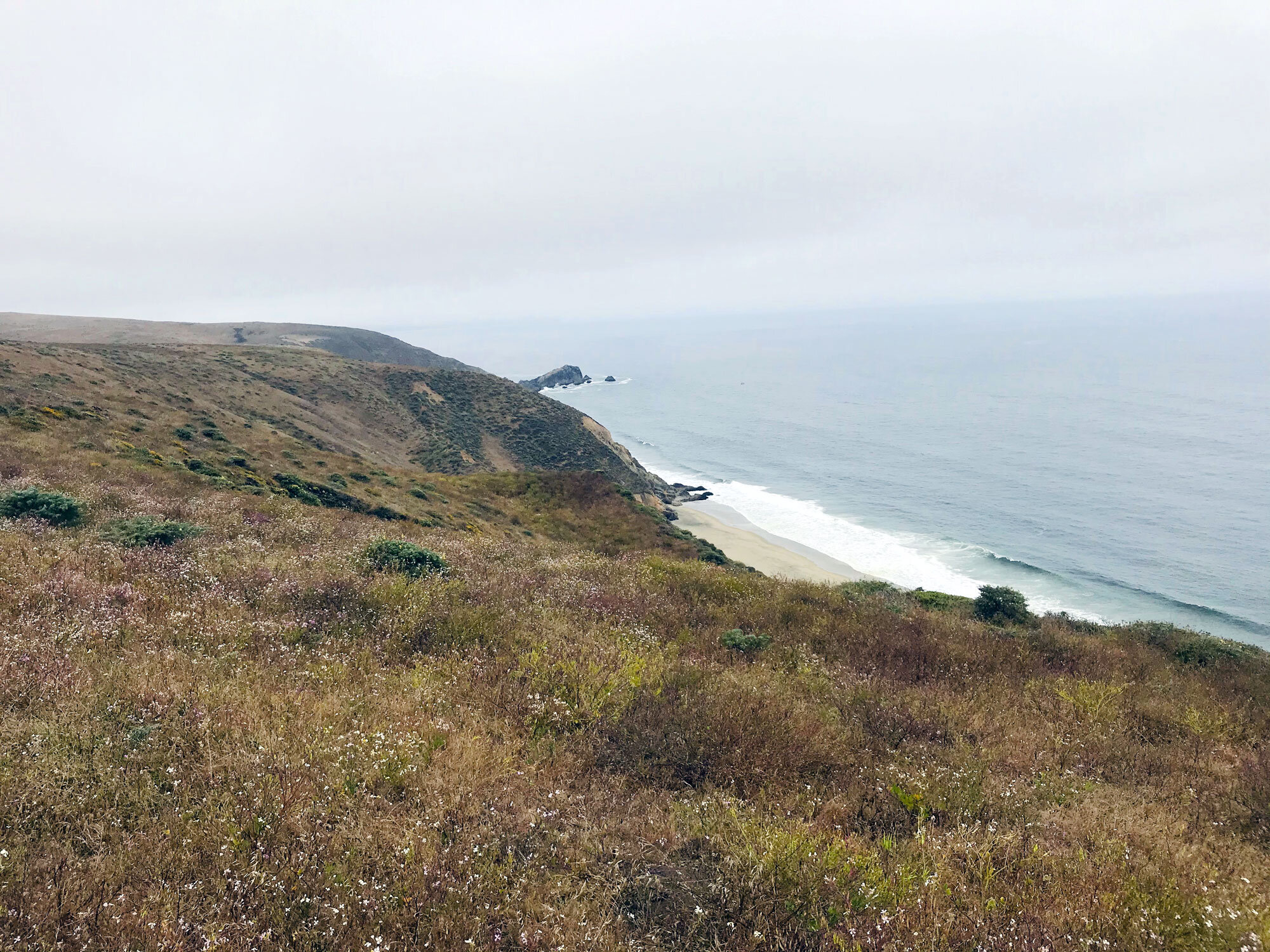

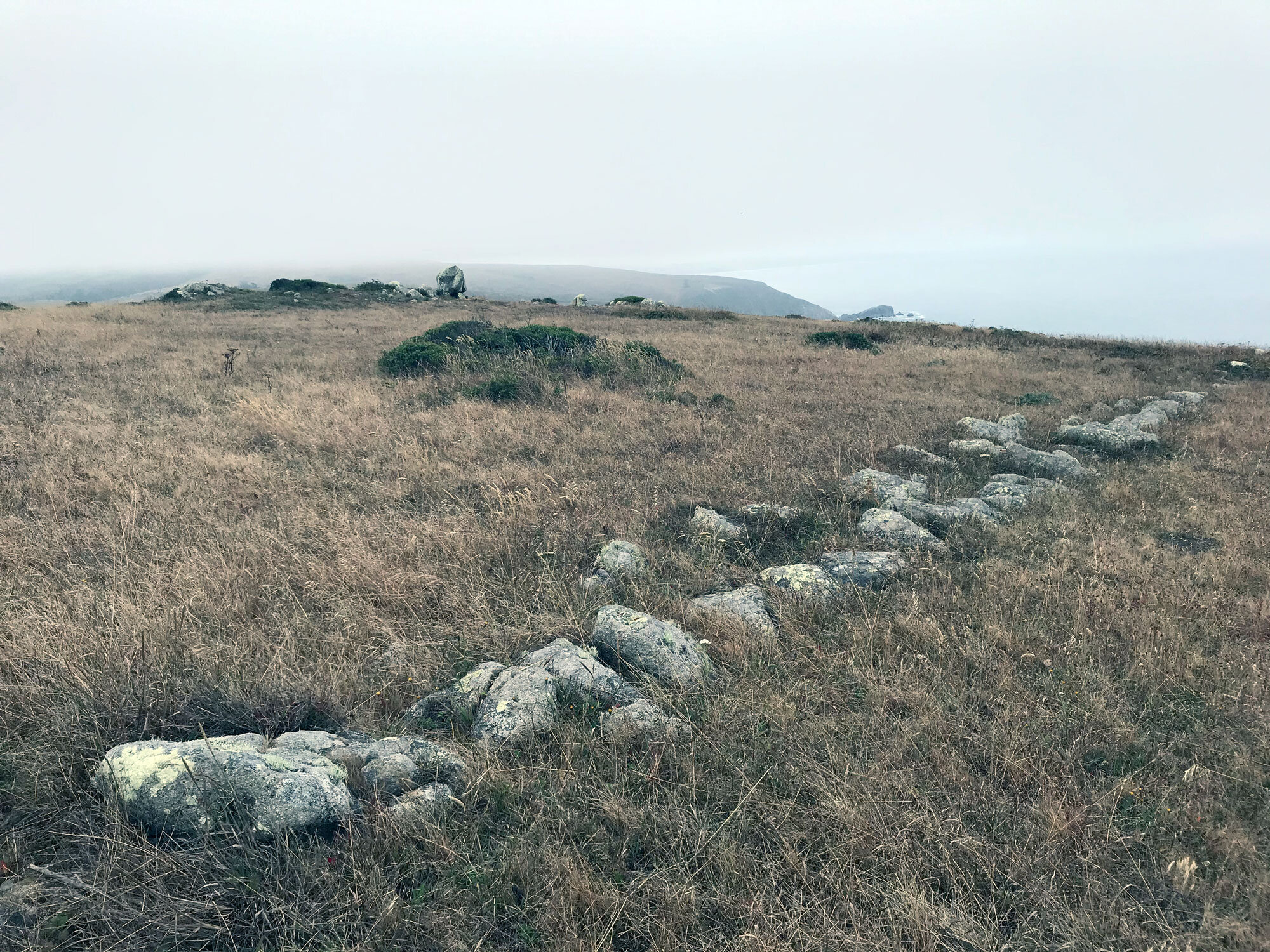



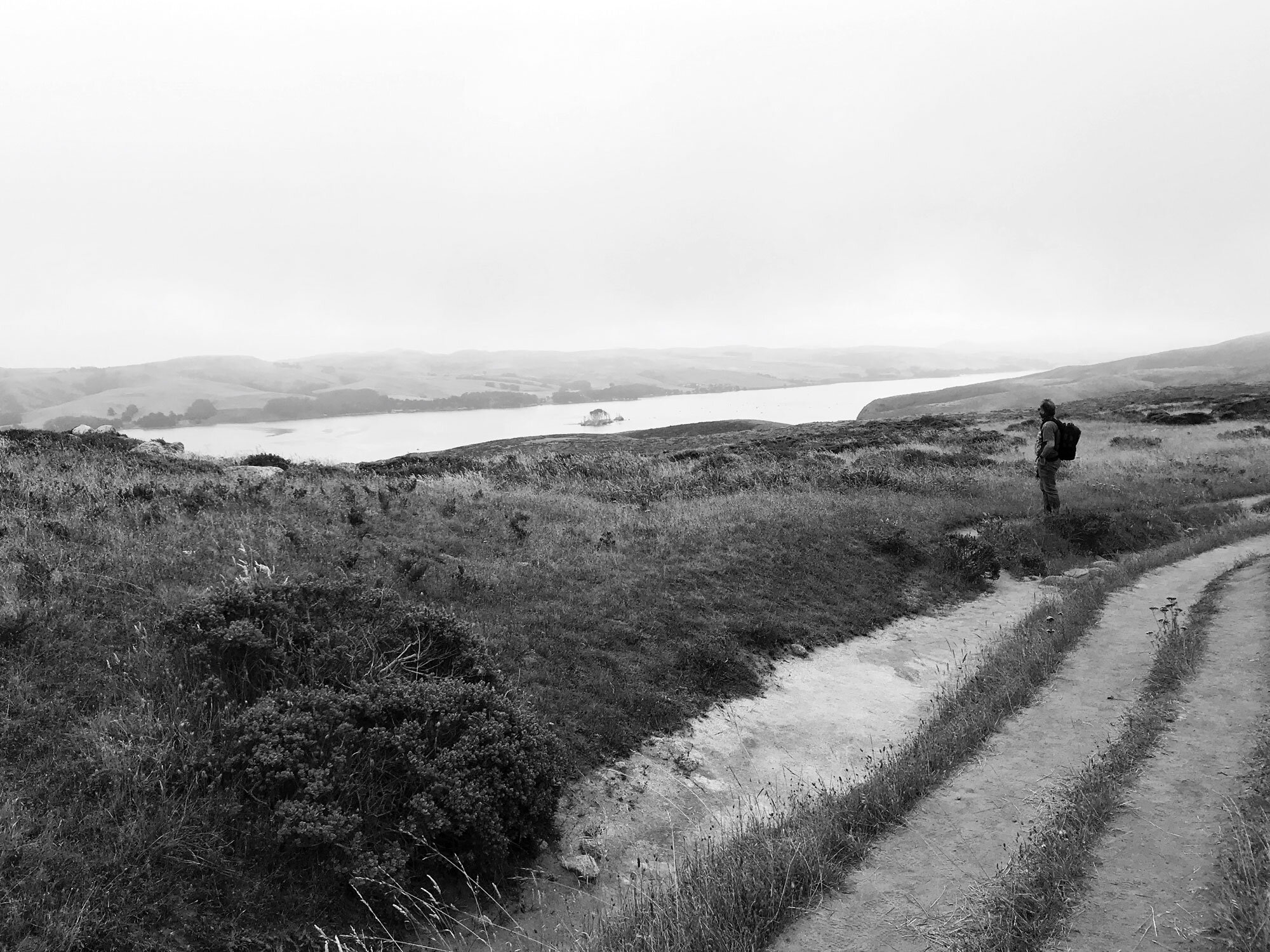

Trail length: 3 miles each way (plus 1.7 miles unmaintained trail if you hike to the very end), out and back
Time: depends on how far you go
Terrain: gently sloping coastal bluffs, wide trail
Restroom? Yes, downhill at McClures Beach parking lot
Parking: small parking lot
Kid friendly? Yes
Dates visited: 11/1/14, 9/2/16, 4/8/17, 8/26/17, 7/28/18, 12/29/18, 3/30/19, 7/3/20, 11/29/20
Favorite plants on this trail: Cobwebby Thistle at the end of the trail, the many varieties of lupine, and Tidy tips in the spring
Favorite spots:
Exploring the numerous rocky outcroppings on both sides of the trail (watch out for the poison oak!)
Sandy beginning of the trail that's host to sand wasps and other interesting insects
Those parts of the trail where Tule Elk are nearby and you don't need binoculars to watch them -- often at about the halfway point.
At the beginning of this trail, you'll see a handful of buildings remaining from the historic Pierce Point Ranch. You can walk through the large white dairy barn and look inside the windows of the one-room building once used as a schoolhouse. At the sandy beginning of the trail, you'll often see sand wasps burrowing while other buzzing insects are exploring flowers. This is a glorious trail with panoramic views of the ocean to the west and of Tomales Bay to the east. On a foggy day, you may not see the ocean but you'll hear the waves crashing against the rocks and shore. The path is completely exposed with only a few trees at the beginning and near the pond toward the end. Fortunately, it's usually cooler on Tomales Point than even a few miles inland. Dress in layers and bring a hat (one that won't blow away!) Springtime is a great time to visit. Wild flowers are blooming and baby elk are nestled in the grasses. Late summer and fall is rutting season, when the male Tule Elk fight for dominance and win the right to mate with the females. If you are looking for a shorter hike, Windy Gap (one mile down the trail) is a popular spot with the elk.
Read Jules Evans’ brilliant description of the Tomales Point Trail from his year long adventure to hike every trail in Point Reyes. It’s full of the history and nature of Tomales Point.
Tule Elk
The main attraction of this trail is the abundant Tule Elk (Cervus canadensis ssp. nannodes). Tomales Point is a Tule Elk preserve. The Tule Elk is a subspecies of elk found only in California. They are the smallest of the North American elk. Males weigh an average of 450 to 550 pounds and females 375 to 425. Rutting season is the most entertaining time to visit when the elk are battling for dominance (July through October). The winner claims his herd of females. They bugle, butt antlers, and of course, mate. The other males are often seen at a distance in a small group. I imagine them sulking quietly in their bachelor groups. Toward the end of the maintained section of the trail, it dips down into a valley with a small pond. That's where I've seen the males. I've often found the herd closest to the trail (within 20-50 feet) about halfway along the trail. Depending on the time of year, you may find Tule Elk everywhere and nearby or only off in the distance.
Tule elk were extinct in Point Reyes by the 1860s as a result of hunting and displacement from ranching, but after a major conservation effort, 8 females and 2 males were reintroduced to Point Reyes National Seashore in 1978. A wonderful way to learn about the Tule Elk of Point Reyes is to take a class with Frank Binney at the Point Reyes Field Institute. He's worked as a volunteer with the Tule Elk over the years and has deep knowledge of the elk and their history. And, he's got great stories! Learn more about Tule Elk on the Point Reyes National Seashore website.
Bees, Wasps, and Flies - can you guess which is which?
It's difficult to tell these insects apart. Is it a bee? a fly? a wasp? Answers: bee, bee, fly, fly, wasp. The "long horns" of the long-horned bee at the far left are its extra long antennae. The bembix wasp at the far right is ghostly white in color with glowing green eyes. It burrows into the sand and is fun to watch going in and out of its sandy holes. My photo does not do it justice. The black and rust-colored fly perched on the cow parsnip flower (next to last) looks cartoonish with spiky spines on its back.
Left to right: Genus Melissodes (A member of Long-horned Bees, Tribe Eucerini), Yellow-faced Bumble Bee (Bombus vosnesenskii), Pritchardomyia vespoides (A wasp-mimicking robber fly), Spiny Tachinid Fly (Paradejeania rutilioides), Genus Bembix (A member of Sand Wasps, Tribe Bembicini).
Spirit Jumping-off Rocks
About 1.5 miles along the trail is an 820-foot-long line of hundreds of granite boulders (322 to be exact) aligned in a path to the ocean and crossing both sides of the trail. It’s easy to walk past without ever noticing the rocks as they are low to the ground. No one knows for sure who placed this line of stones or why. Local scholars speculate the boulders are the foundation of a stone wall that was never completed or a property boundary marker, most likely built for ranching and dating before 1862. The stones appear on an 1862 Coast Survey map. The stones are aligned northeast to southwest. They got their name, “spirit jumping-off rocks” from the Coast Miwok belief that when a person dies their spirt walks west into the afterlife. No matter how they got to Tomales Point and why, it’s inviting to walk along these low boulder tops and to look for lizards sunning themselves.
Read an article in the Point Reyes Light on the mysterious rocks.
Pierce Point Ranch
The historic Pierce Point Ranch buildings are near the trailhead and several of the buildings have signs explaining their history. The barn is fun for kids to explore!
Volunteer Opportunity: Winter Wildlife Docent
The Point Reyes National Seashore has volunteer opportunities for winter wildlife docents January through March, with training in November and December. The Winter Wildlife Docent promotes awareness and protection of northern elephant seals, gray whales, and other marine life by helping visitors view, understand, and appreciate these species.
Staff public wildlife viewing and education areas at the Lighthouse Observation Deck, South Beach Overlook, Elephant Seal Overlook, Historic Lifeboat Station, and Drakes Beach
Perform interpretive roves along Drakes Beach and the Chimney Rock Trail
Set up and break down spotting scopes and interpretive and educational materials at public viewing locations; open and close the Historic Lifeboat Station
Help visitors view, understand, and appreciate northern elephant seals, gray whales, and other marine life by interpreting observed behaviors and educating visitors about the natural history of these species
Help visitors understand the ongoing management and research issues relating to northern elephant seals in Point Reyes National Seashore













